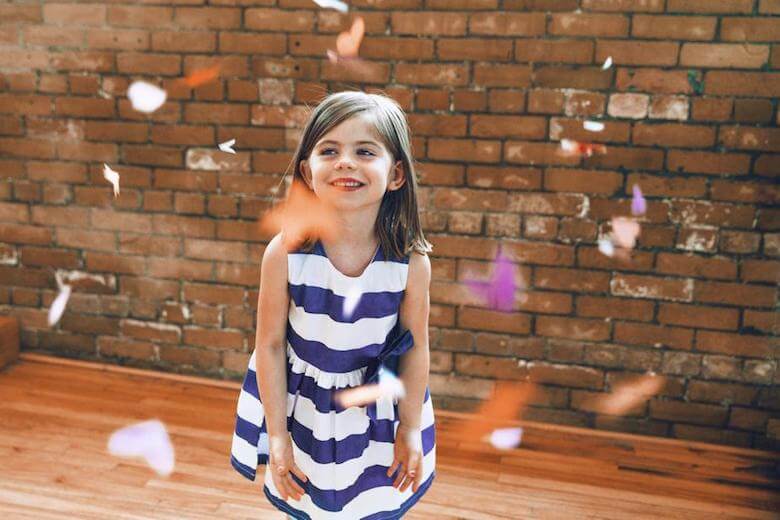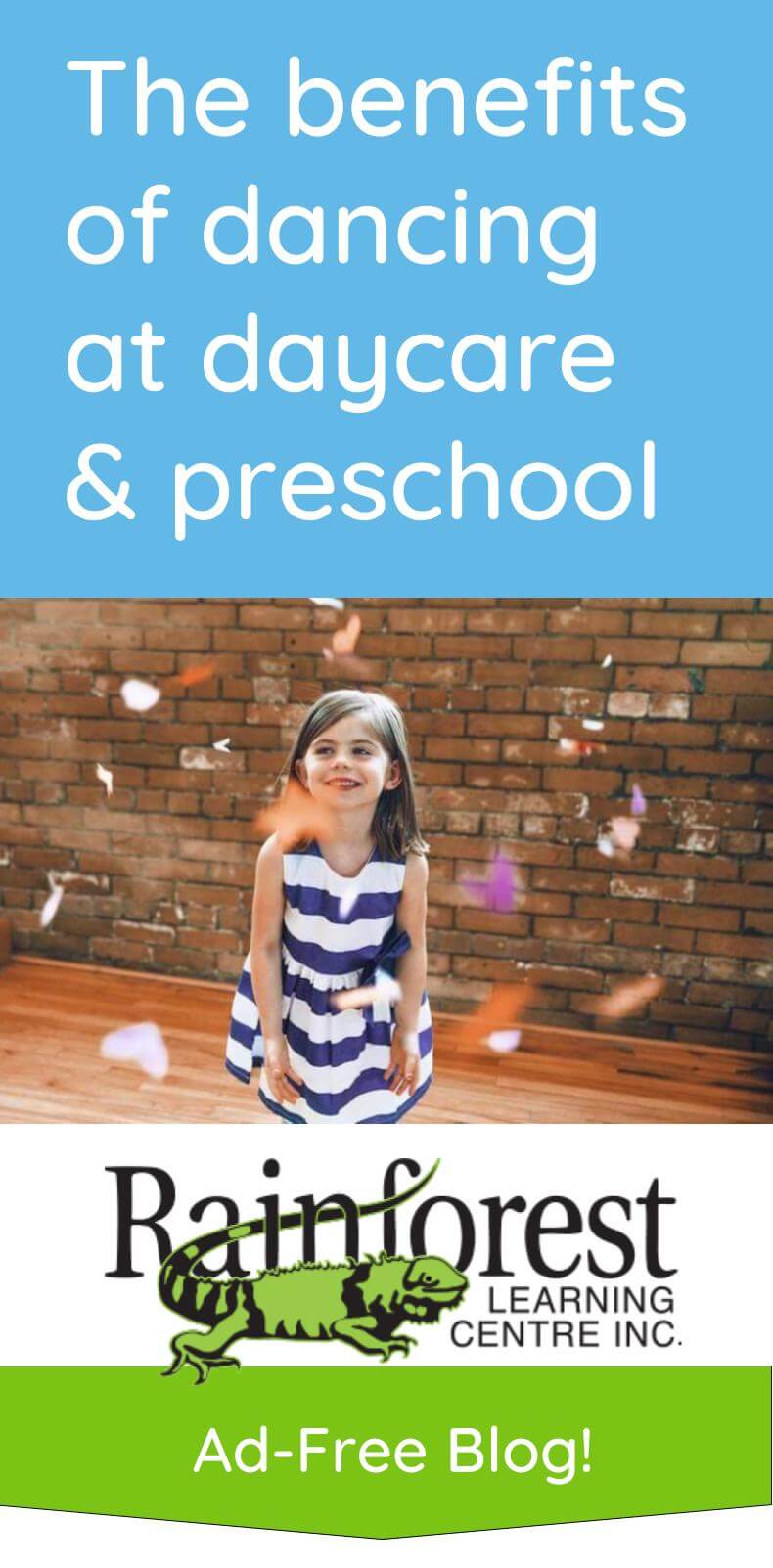
Did you know that preschoolers can get benefits from dancing? It may seem like dancing is just another form of play, or a way to keep kids occupied. But in fact, it has developmental and learning components to it too. Of course, kids at all ages can benefit from dancing – whether structured or not. But in early childhood, it can have specific goals. Below are some of the reasons to incorporate dancing at daycare and preschool.
Dancing, like music, affects children’s learning and development
In the past, we’ve written about how music affects young children and their learning. Those principles go hand-in-hand with dancing. Obviously, music lends itself to dancing. We hear a beat, and we want to move with it. Take that a step further: when a child is memorizing dance moves, or counting rhythmic beats, they’re also practicing learning skills.
According to a comprehensive article in The Atlantic, movement and activity are connected to memory, and a host of other bodily needs (like relieving stress or increasing attention span). That article also mentions a study by psychologist and professor Emily Cross, which shows that kids who move around through dance learn better.
Dancing is a part of the arts, and gives preschoolers a chance for self expression, and more
Just like science, math or reading, the arts are an important part of education. And, just like painting or creative story-telling, the benefits of dance are similar. They help preschoolers express themselves through body movements. They can forget about the ‘rules’ and just move to their heart’s content. But dancing and performing does so much more.
According to this article by Scholastic, the process of performing arts also has side benefits. For example, kids learn to not be afraid of presenting to a crowd. They also gain confidence at mastering their performance, especially when they get an applause. And, they can learn to think on the spot, if things go wrong. These skills help in other subjects and life situations too.
Dancing provides opportunities for social engagement in early childhood
Oftentimes, dance involves more than one person. When children dance in groups, they learn to work together in synchrony. This is great practice for social engagement.
A TED Ed article titled, “Why dance is just as important as math in school,” covers the results that ballroom dancing lessons had on kids in classrooms. One of those was kinder interactions. In this other article by The Atlantic, the subject goes into more detail, showing how a violent, disadvantaged group of kids started to behave more positively towards each other after taking dance lessons.
While the experiments in the classrooms noted above were with older kids, they certainly show how cooperative forms of dancing can benefits preschoolers too. Pupils can learn to work together to achieve a dance move, hold hands and wait for each other’s rhythms, or even learn how to mimic and participate in an activity as a group.
Dancing is good exercise for kids, and encourages motor skills
Of course, we can’t forget that dancing is also a form of exercise – and that’s always good for kids. The benefits here are the same as all other exercise, with a few added perks: you don’t need a gym or equipment to build up a sweat with dancing. It can happen in the middle of the classroom, and it can be part of a constructive break too, to help preschoolers concentrate better throughout the day. Or, it can help them ‘shake it off’ – to physically ‘wiggle’ the pent up energy or emotions out of them.
To conclude, we can see that dancing is not just a meaningless activity – albeit a very fun one! Early childhood educators at daycare and preschool can use dancing as an educational method, and as a way to add art into their curriculum throughout the day. Plus, when we consider the emotional and psychological well-being of a child, then of course, dancing can be seen as having a great part in the daycare or preschool classroom.
See more on our blog:
- 3 ways to build self-awareness in early childhood
- 3 ways to build confidence in young children
- What is normal gross motor development in early childhood, and why is it important?
- 3 ways early childhood educators can help kids get along and feel included
- What is social competence in the early years?
- Why teach kids yoga at daycare? Here are 3 great reasons!
